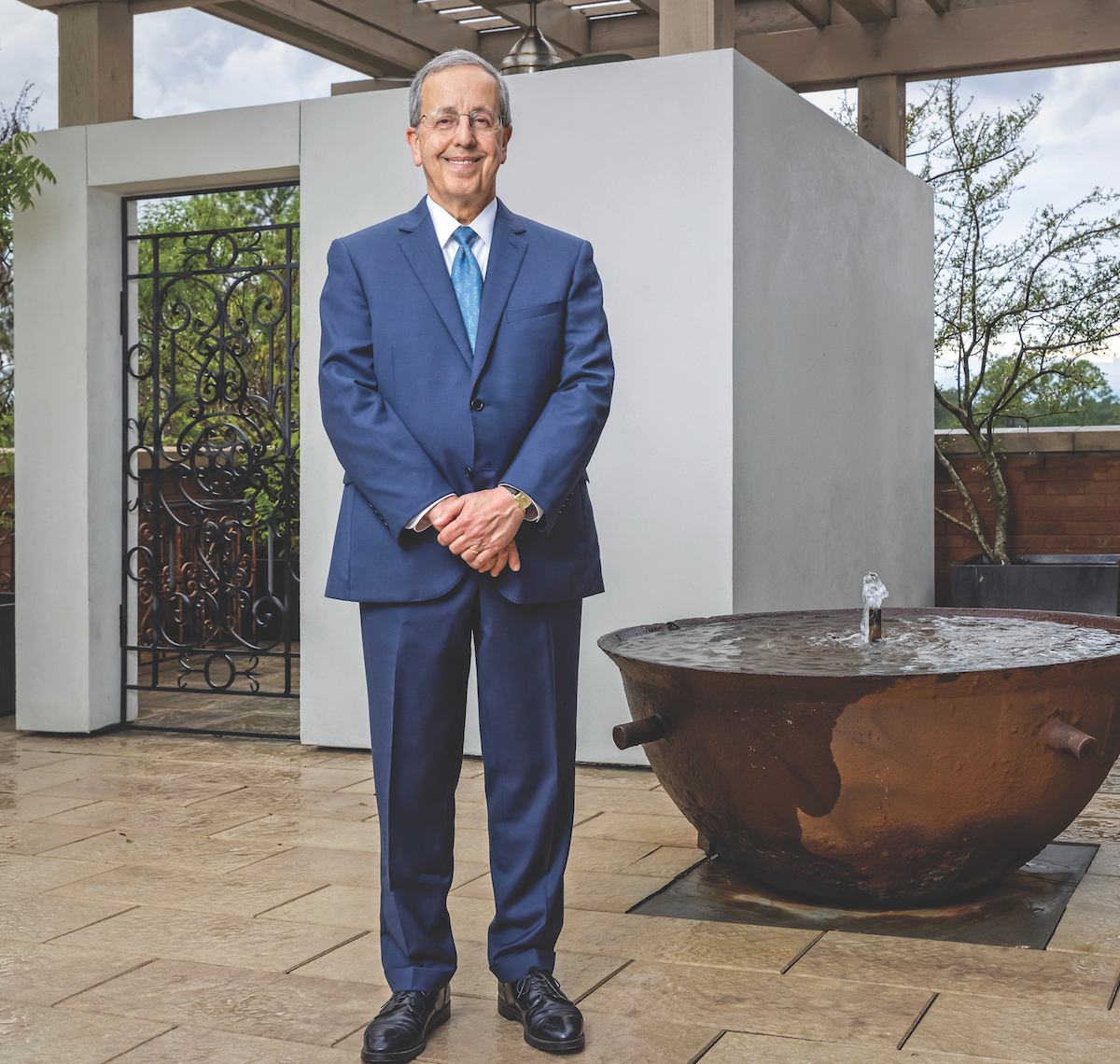The Art of Doctoring
By Sara Bongiorni
Republished with permission from Currents, the quarterly magazine of the Baton Rouge
Area Foundation
Image credit: Tim Mueller
 Louisiana State University's internal medicine residency in Baton Rouge has had two
homes in its first half-century.
Louisiana State University's internal medicine residency in Baton Rouge has had two
homes in its first half-century.
It began at Earl K. Long Hospital in the summer of 1971. The program moved in 2013 to the newly built Medical Education and Innovation Center near Our Lady of the Lake, its teaching hospital since Earl K. Long closed that year.
Over 50 years, the program has trained many of the region's internal medicine physicians and built a reputation as the best program of its kind in the state and among the best in the nation.
The residency regimen achieved that success in two places that could hardly be more different. Earl K. Long was rundown and antiquated years before its closure and subsequent demolition. The MEIC is open and light, a tranquil and inviting space where artwork and even trees on an outdoor teaching terrace celebrate the history of medicine.
Nevertheless, the center's striking sense of place has roots in what happened inside the state-run hospital for the poor. The connection centers on an enduring culture of top-notch science and human-centered instruction that puts a premium on the humanity of patients and young doctors alike.
Dr. George Karam, who directed the program for 30 years, believed in nurturing residents at a time when residency programs didn't put stock in that. Residents were taught—and still are—to diagnose according to both possibility and probability. It's an approach that prizes collegiality, mentoring and opportunities for humor—even happiness—and residents and medical students loved it from the start.
“Fourth-year medical students would fight for the chance to do the internal medicine program there,” said Dr. Leo Seoane, chief academic officer for Ochsner Health. “You knew they cared about you. It was powerful.”
Dr. Dean Lauret understands the approach from multiple perspectives. Two weeks into a rotation at Earl K. Long, the New Orleans native called his wife and suggested they move to Baton Rouge so he could do his residency there. Lauret never left. He spent three years as a resident, another as chief resident, and then joined the teaching faculty.
“The objective is to create critical thinkers who nurture their patients. I knew right away this is where I wanted to be,” said Lauret, who became program director two years ago when Karam moved into the assistant director's role.
Preserving the humanities in medicine in a large, modern hospital became a focus about 10 years ago as the program prepared to transition from Earl K. Long to the MEIC.
Dr. Catherine Lucey, a visiting professor from the University of California, San Francisco, noted at the time that Earl K. Long residents were purpose-driven individuals who had sought out the opportunity to care for vulnerable patients. Changing locations could mean some residents might go elsewhere, Lucey observed.
Karam was committed to preserving a sense of meaning beyond science at a much different place—and keeping the top students the program had long attracted.
“We did not want to lose the person who was looking for the humanities in medicine, not just the science,” Karam said. “We love it here, but we worried about losing the core to who we were. We were going someplace very different.”
In time, the design of the MEIC itself emerged as new source of meaning beyond medicine. Its art installations draw on places as varied as ancient Greece, the LSU campus and New Orleans' Charity Hospital to highlight humanistic values in medicine.
Its indoor and outdoor spaces encourage connection and contemplation. Open-air conversation rooms on the terrace are tucked behind antique wrought-iron doors. The landscaping includes plane trees like those that shaded Hippocrates as he taught medicine to his students. Twisting red-glass reeds by blown-glass sculptor Dale Chihuly provide striking contrast against lush greenery and a nod to Baton Rouge in the form of red sticks.
Artwork includes an antique embroidery-on-watercolor depiction of Aesculapius, the Greek god of healing, placing a crown on the head of a man to guard against quackery. A large, commissioned reproduction of Enrique Alferez's sculpture “Louisiana at Work and Play” hangs in the lobby, a tribute to the original's place on the façade of Charity Hospital.
“The building became a way to connect purpose-driven people to humanity in medicine,” Karam said. “It became the next iteration of defining what purpose could be.”
It also means Earl K. Long Hospital is never far away.
“Its roots are absolutely in that facility on Airline Highway,” Lauret said.
The internal medicine residency program continues to attract top students. Over the past few years, residents have gone on to Johns Hopkins, the National Institutes of Health and Vanderbilt for additional training. Graduating medical students in Baton Rouge and New Orleans have selected it as the outstanding clinical program in the medical school every year since 2005.
“People who come out of there look at medicine as a calling,” said Ed Silvey, Baton Rouge Clinic's chief medical officer. “We are blessed to have it in Baton Rouge.”
